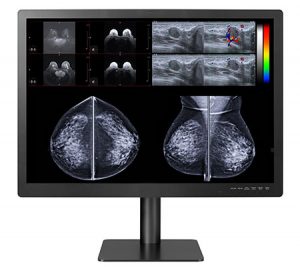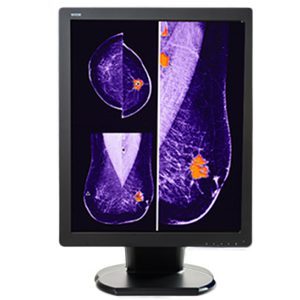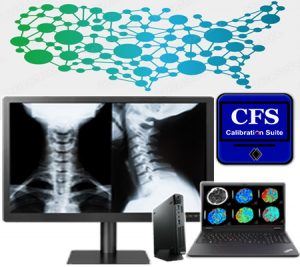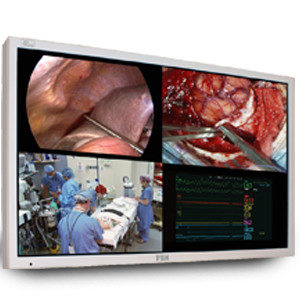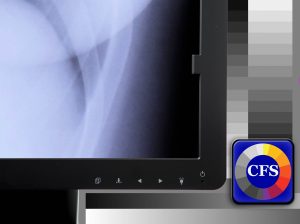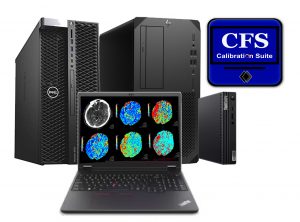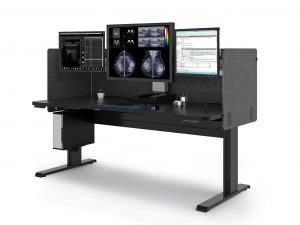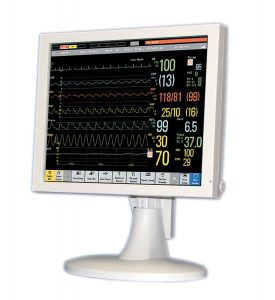
A repetitive strain injury (RSI) is a gradual buildup of damage to muscles, tendons, and nerves from repetitive motions. Repetitive strain injuries in the workplace are common and may be caused by many different types of activities that are repeated throughout the workday. Radiology suite activities that commonly increase the risks are actions that stress the same muscles repeatedly, lifting heaving objects, maintaining an abnormal posture, and using a computer without implementing proper ergonomics.
Common repetitive strain injuries in the workplace include carpal tunnel syndrome, bursitis, and rotator cuff tendonitis. Although these conditions may be minor and easily treated, some require time off work for physical therapy or even surgery. Another solution, such as prescribed drugs to reduce symptoms, may interfere with a worker’s efficiency and ability to maintain a high standard of performance. Radiology workflows, with their equipment and computer usage plus situations that require heavy lifting, have potential risks for RSIs.
Radiology workstations and Repetitive Strain Injuries
A study published by the National Institutes of Health reports that 70 percent of radiologists surveyed reported that they were experiencing repetitive stress symptoms, and 42 percent reported a previous diagnosis of repetitive stress syndrome. Of the radiologists surveyed, 68 percent said they spent more than two hours a day in an awkward posture. Some symptoms were caused by moving and positioning patients and imaging devices. Specifically, the following factors were attributed to their symptoms:
- • Patient transfers, 33 percent;
- • Ultrasound probes, 23 percent;
- • Heavy equipment used for imaging, 20 percent;
- • Uncomfortable chairs, 19 percent; and
- • Lead aprons, 10 percent.
Most radiology departments are filmless or are moving in that direction. Reviewing and reporting rooms have multiple radiological workstations. The computer use trend is growing so quickly it is difficult to keep up with the considerations one needs to have when planning or remodeling the reporting room.
Computer usage and Repetitive Stress Injuries in the Workplace
Computer usage also contributes to RSIs. According to Dr. Mansi Saksena, a radiologist at Massachusetts General Hospital (MGH), “The computer burden on the radiologist today is comparable to or more than that of the average person working on an office desktop.” MGH surveyed its radiology team and found that most radiologists with more than ten years of experience exhibited some RSI symptoms.
Saksena also reported on a test that used special software to compare mouse clicks of radiologists to secretaries working in the same department. During the test week, the average daily number of mouse clicks of radiologists was 826, while daily mouse clicks by secretaries averaged 1150. Radiologists who read and dictated CT exams scored the highest in mouse clicks among the tested physicians. High click count rates are associated with wrist and forearm pain, and 826 is not an insignificant number.
She further notes that computer stations are shared among the technician and physician staff, so these work areas are not designed to meet the needs of individual users. Saksena concluded, “Radiologists may not have a demonstrable injury…But at the end of the workday, [they] may have pain in [the] back, shoulders, neck, and wrists. That can seriously compromise…productivity at work and at home.” The University of Wisconsin School of Medicine has some practical advice on preventing carpal tunnel syndrome at work stations that are not individually designed.
The role of ergonomics in radiology departments
MJH Life Sciences reported on an interview with several experts in ergonomics. These professionals gave their top tips for ways radiologists can position themselves for long stretches of pain-free computer image reading. Some suggestions require no special equipment, such as proper posture, adequate workspace, and the 20-20-20 eye break. This is simply taking a 20-second eye break every 20 minutes and looking at something at least 20 feet away. Looking into the distance relaxes the eyes and helps the eyes focus on images for long stretches of work.
The report recommends an ergonomic, dynamic-back chair that moves with the user and provides head and neck support. After an ergonomically correct chair is selected, it then must be adjusted to provide the greatest support and comfort. While working, the user must be comfortably seated with his feet resting firmly on the floor. The armrests should be the same height and support the arms at a 90-degree angle. The chair should move with the user.
Computer monitors should be adjustable for height and tilt and swing in different directions so they can be individually adjusted to the user. Mukesh Harisinghani, MD, associate professor of radiology at Harvard University and assistant radiologist with the department of abdominal imaging at Massachusetts General Hospital believes that these monitors are among the biggest ergonomic improvements for radiology workstations to decrease RSIs.
Monitor arms that arch horizontally are used in Wall Street trading rooms and are ideal for reading radiological images. Like OMNIMAX movies, the screen is curved because that’s how our vision works. No matter how ergonomically correct the chair, if the monitor is not adjusted properly, strain and discomfort will ensue. The ideal viewing distance is 18 inches to 2 feet. If the screen resolution is too small at this distance, it is better to enlarge the font than to scoot closer. The radiologist should look straight at the monitor or, even better, down at a 14-degree angle. This positioning puts the least strain on the eyes and body and should result in a higher volume of work and increased accuracy with less effort.
Height adjustable ergonomic workstations allow for individual configurations that decrease the chance of RSIs. Workstations that allow the user to sit or stand are an increasingly popular option. Lighting is an important component of an efficient radiology reading room. Bright overhead lights make monitors more difficult to see. The workstations should have a floodlight on the wall behind the workstation with a brightness that matches the monitor. Each workstation should include a task light that has a blue light component for reading paper documents. This helps the pupils constrict and makes print easier to read.
Designing or remodeling a radiology suite requires many considerations aside from temporary comfort, aesthetics, and budget. You may want some assistance in choosing the best environment for the specialized work that is performed in the radiology suite.
Contact the diagnostic imaging experts at Double Black Imaging for more information on reducing repetitive stress injuries in the workplace and enhancing diagnostic capabilities in your workplace. We are eager to help you create the most efficient and comfortable environment for your radiology team.
